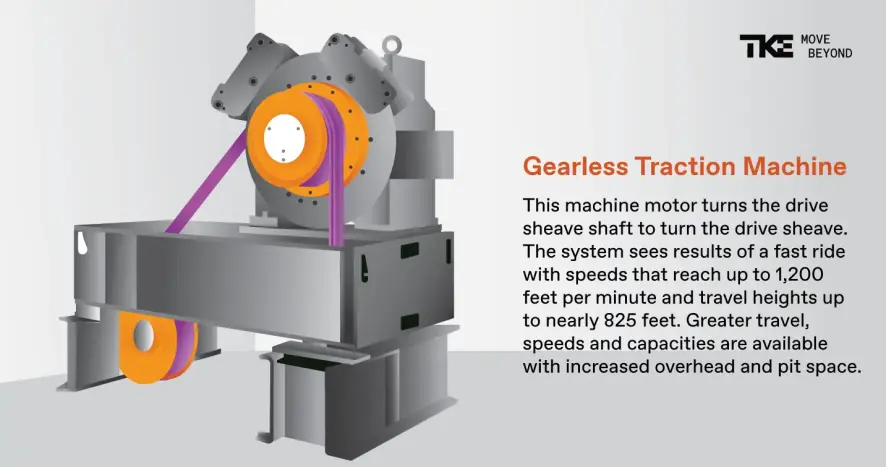What is a “Gearless” Traction Elevator?
Since the debut of the first safe passenger elevator in the 1800s, only two types of elevators have taken off. One is a hydraulic elevator, which uses a hydraulic piston system to lift and lower the cab. The other is the classic traction elevator which works on a pulley and counterweight system and requires a machine.
The different types of machines for a traction elevator can also be broken up into two categories, geared and gearless. While traction elevators are highly complex systems, the difference between these two machine types is fairly simple.
How does a gearless machine work?
Before delving into specifics of how the gearless machine works, it’s essential to understand traction elevators in general.
While they didn’t become a common form of vertical transportation until the early 1900s, the concept of the traction elevator had been around for eons. The first elevator concepts with weight and pulley systems can be traced back to Archimedes in ancient Greece. This 19th century elevator could only operate using manpower to hand-operate the “machine."
Today, traction elevators are raised and lowered with steel ropes or belts which run over a wheel and work with counterweights on a pulley system. Motors are also used for efficiency to help the drive system work at higher speeds.

If the machine that manages all of these moving parts is a gearless machine, it will have a drive sheave, deflector sheave, dual brake system and direct-drive permanent magnet alternating current (AC) motor. The gearless machine will have its wheel attached directly onto the electric motor to instantaneously rotate the drive sheave. As the drive sheave rotates, the elevator cab will raise and lower accordingly. The simplest and quickest way to tell a gearless machine from a geared machine is to check if everything is running in the same direction.
What type of building are gearless machines made for?
Due to its alternating current motor and higher lifting capacity, the gearless machine is ideal for many building types but most commonly seen in high-rises.
Geared machines tend to be seen in low-to-mid-rise buildings as they have a lower lifting capacity. When choosing an elevator machine for a high-rise, the gearless is the clear choice as its size and power will help the system run smoothly.
If you’d like to learn more about gearless machines, please take a look at Classroom On-Demand for further details about the innerworkings of elevators, escalators and moving walks. Or reach out to your local branch manager to decide what solution works best for you.
 United States
United States

